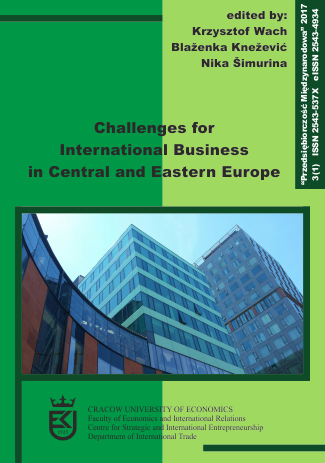Measuring the development of human resources with the usage of Human Development Index in selected CEE countries

Abstract
In the theoretical part of the research, the authors will define the category of human resources and identify its similarities and differences in relation to similar categories. Furthermore, they will provide a brief overview of theoretical and methodological achievements in the measuring of the value of human capital at the macro level, i.e. development of human resources.
In the empirical part of the research, development of human resources will be evaluated through the HDI in selected countries, with particular emphasis on CEE countries. Human resource development rank of CEE countries in 2014 will be established, and the change in the index in the period 1990-2014 presented and analysed. In conclusion, it will be identified which countries achieved the greatest change in human development in the period 1990-2014.
Keywords
human resources, economic growth, development, HDI, CEE
References
- Bagolin I. (2008). Human Development Index (HDI) and its family of indices: an evolving critical review. Revista de Economia. 34 (2), 7-28.
- Bagolin I. (2008). Human Development Index – a poor representation to Human Development Approach. http://www-1.unipv.it/deontica/ca2004/papers/bagolin.pdf
- Becker, G. S. (1993). Human Capital – A Theoretical and Empirical Analysis with Special Reference to Education. Third edition. Chichago: The University of Chicago Press.
- Bowman, M.J. (1968). Principles in the Valuation of Human Capital. The Review of Income and Wealth. 3.
- Dimension of intellectual capital (2016) http://www.agr.hr/cro/nastava/bs/moduli/doc/ag1179_pojmovnik.pdf
- Dragičević, M. (1996). Ekonomija i novi razvoj. Zagreb: Alineja.
- Harbison, F., Myers, C.A. (1964). Education, Manpower, and Economic Growth. New York: McGraw-Hill Book Company.
- Harper-Anderson, E. (2008). Measuring the connection between workforce development and economic development. Economic development quarterly. 22 (2), 119-135.
- Huang, W.C. (2000). Human Capital and economic Development. Michigan: W.E. Upjohn Institute for Employment Research.
- Ježić, Z. (2015). Važnost tehnologije, istraživanja i razvoja i inovacija u konkurentnome gospodarstvu zasnovanom na znanju in Razvoj gospodarske konkurentnosti Republike Hrvatske kao članice EU. Rijeka: Ekonomski Fakultet Sveučilišta u Rijeci.
- Karaman Aksentijević, N. (2012). Ljudski potencijali i ekonomski razvoj. Rijeka: Ekonomski fakultet Rijeka.
- Sauvy, A. (1952). Theorie Generale de la Population, Paris: PUF.
- Schultz, T.W (1985). Ulaganje u ljude. Zagreb: Centar za kulturnu djelatnost.
- Soete, L, (2007). Notes on UIL-Related Policies of National Governments In: How Universities Promote Economic Growth. Washington: The World Bank.
- Stepanov, L.V. (1972). World Economics and World’s Future, In: J.N. Bhagwati (eds.), Ecconomic and World Order From the 1970’s to the 1990’s, New York: Mcmilan Publishing Co.
- Sundać, D., Švast, N. (2009). Intelektualni kapital temeljni čimbenik konkurentnosti poduzeća. Zagreb: Ministry of Economy, Labour and Entrepreneurship.
- Todaro, M., P. (2003). Economic Development. New York: Longman.
- United Nations Development Programme (2016). Human Development Data (1980-2015), http://hdr.undp.org/en/data
- United Nations Development Programme (2016). Technical notes http://hdr.undp.org/sites/default/files/hdr2015_technical_notes.pdf
- Worldbank (2016). Unleashing Prosperity http://siteresources.worldbank.org/ECAEXT/Resources/publications/UnleashingProsperity.pdf